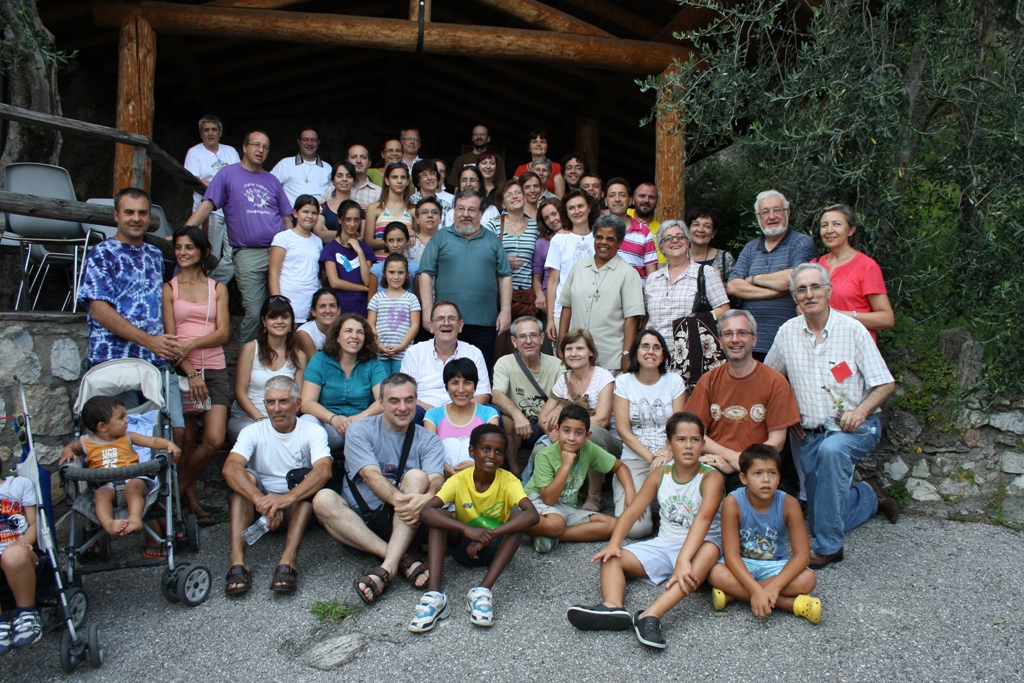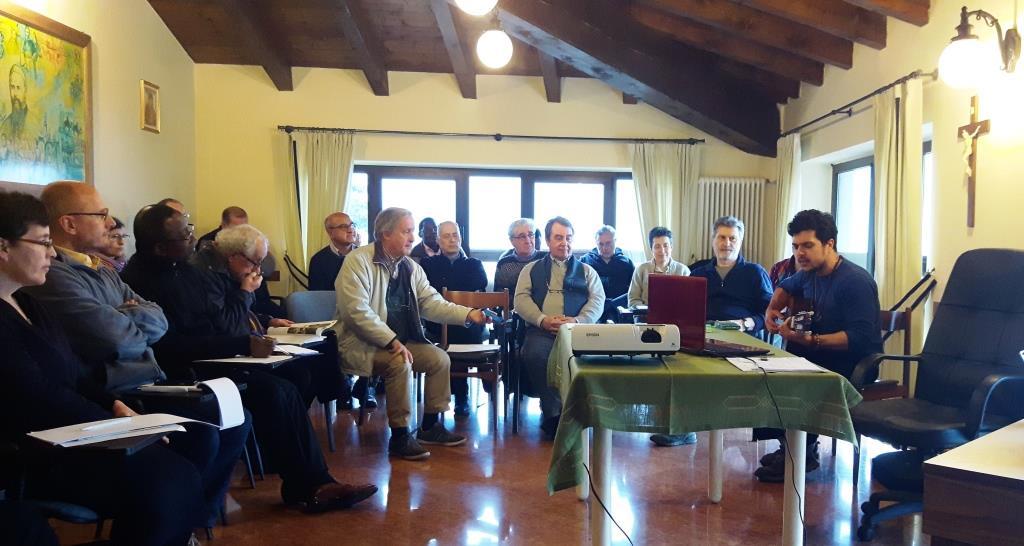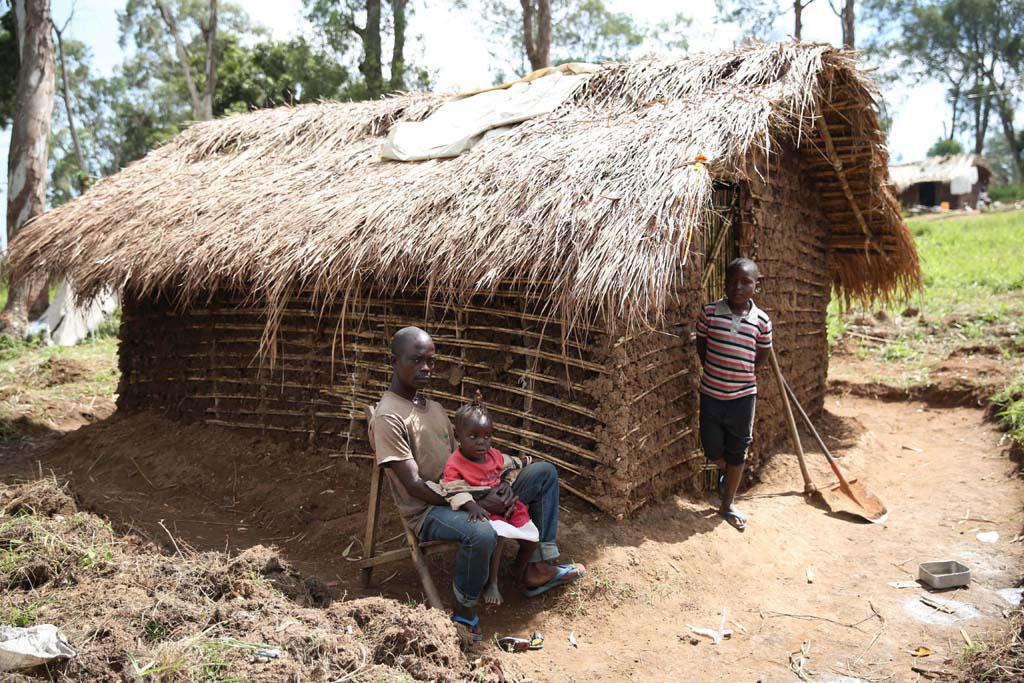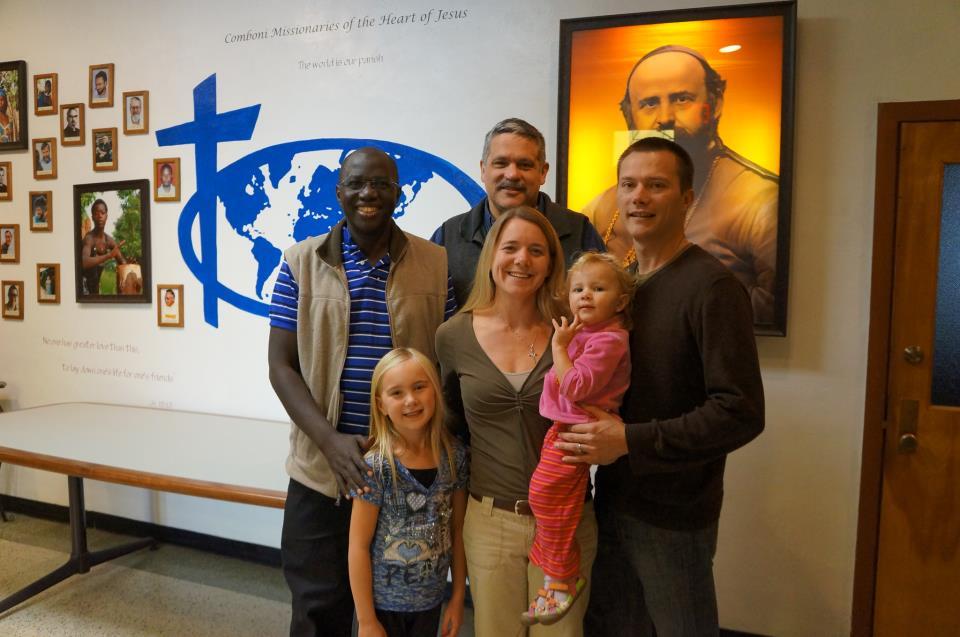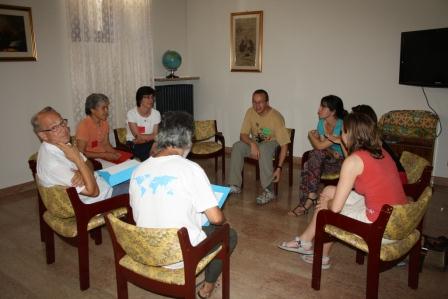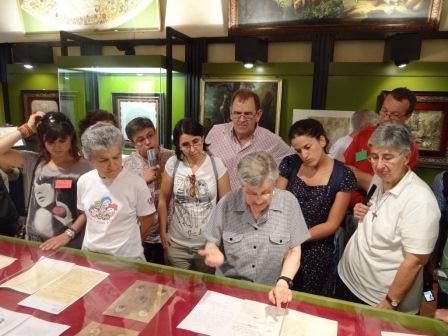Daniel Comboni
Comboni Missionaries
Institutional area
Other links
Newsletter
Rome, Thursday, August 16, 2012
The Comboni Lay Missionaries from Italy, Spain, Germany, Portugal and Poland gathered in Verona, Italy on August 2-8, 2012. They were days of reflection on the vocation and specificity of the missionary laity in the context of the Comboni charism. Respecting the slogan chosen for the meeting, “In the footsteps of Comboni,” an entire day was dedicated to a visit to Limone, the birthplace of Comboni. Prayer, sharing of ideas and community living contributed to the fact that everyone returned home renewed and encouraged to continue the service to the Church and to the missions.
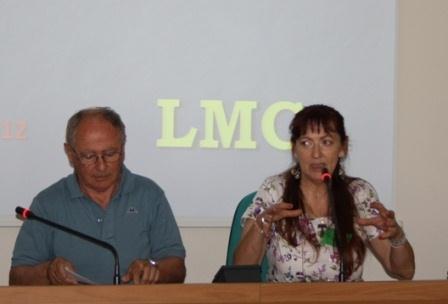
Fr. Corrado Masini e Rosanna Braglia.
Seventy-five people around the table: fifty CLM, fifteen children of these couples, eight Comboni Missionaries and two Comboni Sisters. All gathered in the first house that Comboni bought in Verona for the Institute of the Pie Madri della Nigrizia, now known as Comboni Missionary Sisters. The familiar and cordial welcoming of the sisters of the Mother House – which received the grade of excellent in the final evaluation – favored the success of the meeting of the CLM, which is considered the fourth branch of the Comboni family.
The provincial superior of Italy, Fr. Corrado Masini, in his opening remarks underlined that this was a meeting designed to make them live together “the undying fire of mission.” According to Fr. Corrado, to live with Comboni is “to place mission at the center, to live the mission each day and to embrace it always.” He concluded wishing to all the participants days “of communion, listening, mission and formation.”
Alberto de la Portilla, a lay member of the Central Committee of the CLM, presented the history of the movement from its origins and, in larger details, the journey made in Europe.
Fr. Arlindo Pinto, general coordinator of the CLM, stressed how important it is that the movement have “a vision, a structure and solid formation” and underlined the need that the CLM of all circumscription “know the documents that refer to the CLM, adapt themselves to the reflections already made and, in a special manner, that they offer continuity to the various directives given by the various continental meetings and intercontinental assemblies that have taken place.” According to Fr. Arlindo, “each individual lay person and each group of CLM are an enrichment of the Church, of the mission and of the Comboni Family. This wealth needs to be shared and communicated to the poorest of the poor, the closest as well as the farthest away.”
Fr. Francesco Pierli, former superior general and now a missionary in Kenya, presided over the Eucharist of the first day. As he was passing through Verona, he said that the CLM are a “sign of hope” for those who follow the charism of Comboni and must “avoid any type of fragmentation that will only weaken and block the movement.” Fr. Pierli asked the CLM to be “builders of bridges and to use “dialog that doesn’t exclude anyone and anything.”
On the second day, Fr. Joaquim Valente presented the theme “San Daniel Comboni and the Cenacles of Apostles.” Fr. Joaquim explained the historical context of the involvement of the laity in civil society and in the Church from Comboni’s day up to the present. On the activity of the Church there remains the slogan: “The whole Church and everyone in the Church.” Referring to a new vision of the Church and of the laity as cenacles around the Crucified and the Risen, he used terms such as contemplation, call and sending, formation, cooperation, participation, responsibility and service.
Fr. Ramón Aguiluz, provincial superior of Spain and in charge of the CLM of Europe, and Fr. Danilo Castello, superior of the community of Limone, underlined, during the Eucharistic celebration they presided over, the importance of Comboni for the vision of a Church which is missionary, open to the world and to the needy of our times.
The proof that the Comboni charism remains alive was given – via Skype – by two couples of CLM (one Spanish and one Italian) who are in mission: one in Arequipa, Peru and the other in Aber, Uganda.
The most significant moments of the gathering were the visits to the places where Comboni spent a good part of his life and, in particular his birth place, Limone. To speak of Limone, of the Comboni family and of the social and political situation of the time was the task of Fr. Mario Trebeschi, in charge of the historical archives of the diocese of Brescia, and former pastor of the town where Comboni was baptized. According to Fr. Mario, the arrival of the Comboni family in Limone had brought at the time a great social and economic development to the town and, later, a great missionary, San Daniel Comboni.
A saint whom the Comboni Sister from Eritrea, Sr. Elisa Kidané described as “a man who knew how to dialog with Africa and with the Africans.” Sr. Elisa spoke on the theme, “The mission of Comboni seen by the Africans of yesterday and of today”, underlining from her African perspective, the greatness of Comboni’s plan, valid even down to this day. “Comboni had as his objective – she said – to establish relations with Africa and its people. The mission of Comboni consisted in making the Africans responsible for their own social and spiritual growth. His famous cry to ‘save Africa with Africa’ well expresses his vision of wanting to make the Africans independent and autonomous and not objects of the mission. Sr. Elisa then presented to the CLM the vision of mission which sees the African as subject of and in dialog with the mission, and not as the object of his missionary passion. “The Comboni mission means, today more than ever, trust and respect for the peoples of Africa, which requires a knowledge of their culture. Comboni used to tell his missionaries that they needed to study the language and the culture of the Africans even before leaving for their mission.”
In the morning of the last day, Federico Veronesi, a CLM who has worked in Brazil and Fr. Lino Spezia, who has experience of mission in Uganda and in Kenya, spoke on the theme, “Today does it still make sense to go?” Both of them underlined the importance and the enrichment of going out and sharing one’s life with other people. Fr. Lino said that, according to him, the CLM is the one who, after a period of formation, “exercises the option of belonging to the CLM and goes to the missions for a certain time, and, upon his return, decides to remain connected to the movement.”
The evaluation of the meeting was very positive. It is shown by what was written, the following day, by Mario Olivieri who attended with his wife Alessia Davide and three children (Teresa, 10 years old, Saverio, four, and Daniele, one and a half) who was in Uganda as a CLM: “To all the dear friends CLM of Europe, a heartfelt thank you for the beautiful days we spent together. It was not easy for us as a family to decide to attend the meeting with three children, but we decided to attend, despite the difficulties, in order to be together at the same table. (…) It was beautiful to be with you, united and brothers in Christ and in Comboni, despite the difference of languages and cultures. Many thanks to all of you. The list of our e-mails addresses is very precious. They represent faces that will remain imprinted in our hearts. Our mission, I am sure, will make us meet again. A great embrace and happy mission!”
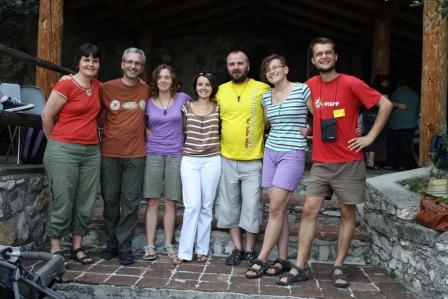
Comboni Lay Missionaries from Germany and Poland.
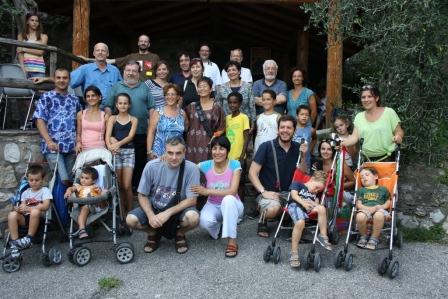
Comboni Lay Missionaries from Italy.
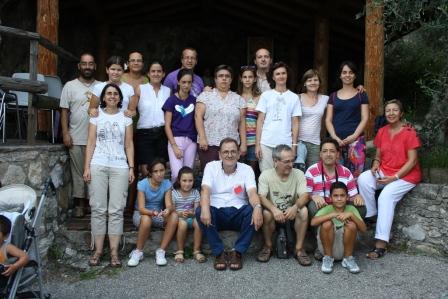
Comboni Lay Missionaries from Spain.
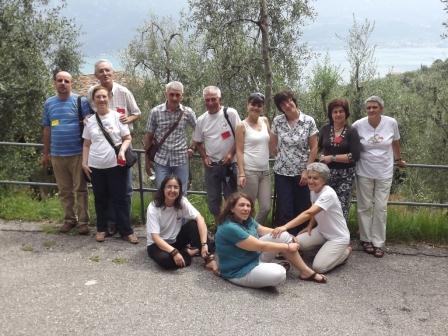
Comboni Lay Missionaries from Portugal.
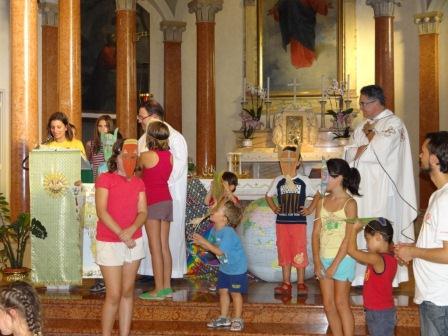
From left: Fr. Lino Spezia and Fr. Francesco Pierli.
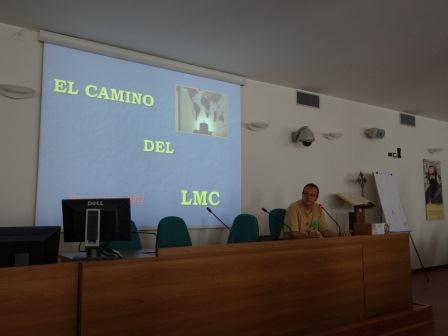
Alberto de la Portilla, a lay member of the Central Committee of the CLM.
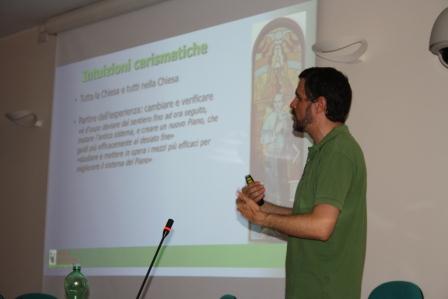
Fr. Joaquim José G. Oliveira Valente.
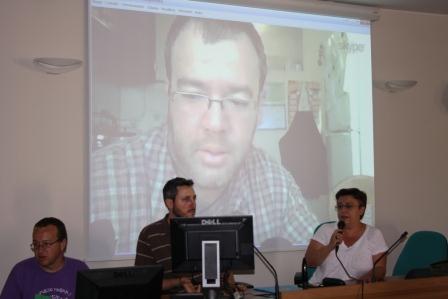
The proof that the Comboni charism remains alive was given – via Skype –
by two couples of CLM who are in mission: one in Arequipa, Peru and the other in Aber, Uganda.

